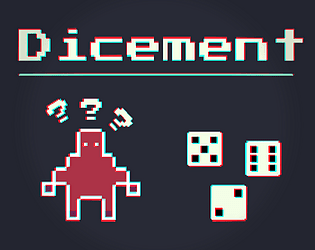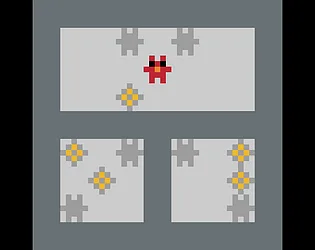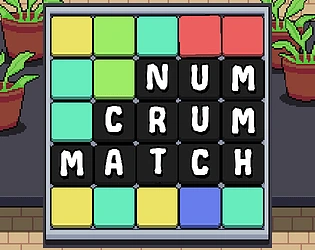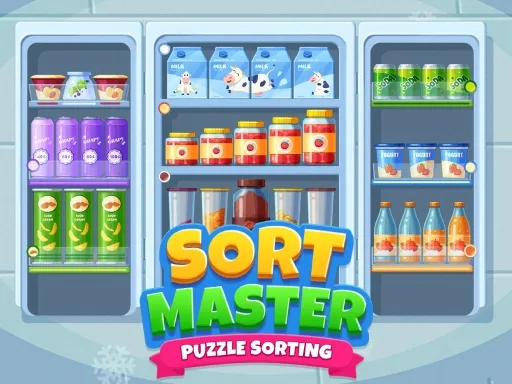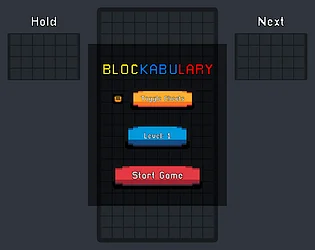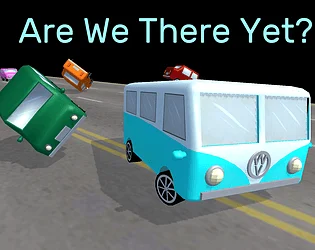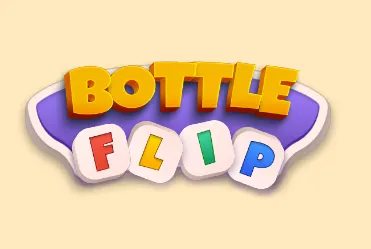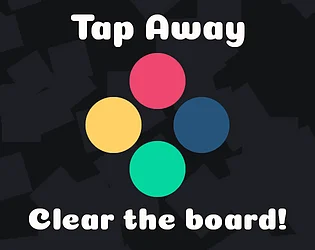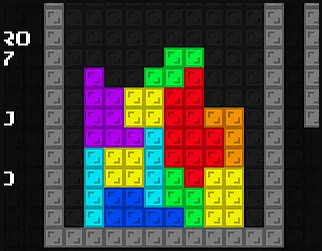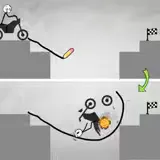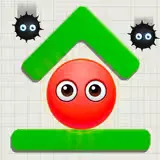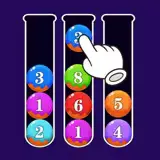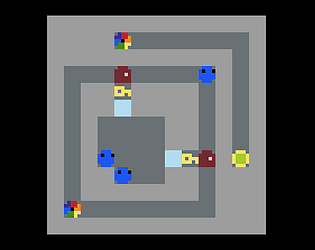
Key Stupid
Push keys to unlock puzzles in this charming PICO-8 challenge
Key Stupid
Key Stupid — Push Keys, Unlock Solutions

Key Stupid embraces the classic simplicity of PICO-8 design while delivering genuinely clever puzzle mechanics. The premise is straightforward: you push keys around grid-based levels to unlock paths and complete objectives. But beneath this simple concept lies a brain-teasing challenge where every move matters, spatial planning is essential, and the satisfaction of solving a tricky puzzle feels thoroughly earned. The retro pixel-art aesthetic and tight design make Key Stupid the perfect example of how constraints breed creativity.
🎮 What is Key Stupid?
Key Stupid is a puzzle game built for the PICO-8 fantasy console, focusing on key-pushing mechanics within grid-based environments. You navigate levels filled with keys that must be pushed into specific positions to unlock doors, create paths, or trigger mechanisms. The game follows in the tradition of classic block-pushing puzzlers like Sokoban but adds its own twist through key-specific mechanics and increasingly clever level designs.
The PICO-8 platform's limitations—16 colors, 128x128 pixel resolution, limited sound channels—force focused, intentional design. Key Stupid leverages these constraints to create puzzles that feel immediately understandable yet remain challenging to solve. Each level presents a self-contained puzzle where keys must be manipulated just right to achieve the solution, with no unnecessary complexity obscuring the core challenge.
🕹️ Controls
Key Stupid uses classic directional controls appropriate for PICO-8 games:
| Action | Control |
|---|---|
| Move Up | ↑ Up Arrow or W |
| Move Down | ↓ Down Arrow or S |
| Move Left | ← Left Arrow or A |
| Move Right | → Right Arrow or D |
| Undo Move | Z or U |
| Restart Level | R |
| Menu | ESC or P |
The simple grid-based movement keeps focus on puzzle-solving rather than mechanical execution.
🧩 How to Play Key Stupid
Core Mechanics
Key Stupid revolves around strategic key manipulation:
- Survey the Level – Observe key positions, locked doors, and objectives
- Plan Your Moves – Determine which keys need pushing and in what order
- Push Keys – Move into keys to push them one space forward
- Unlock Paths – Position keys to trigger doors or mechanisms
- Avoid Dead Ends – Prevent keys from becoming stuck in unsolvable positions
- Complete Objectives – Solve each level's specific goal
- Progress Forward – Advance through increasingly challenging puzzles
Key-Pushing Rules
Understanding the fundamental mechanics is essential for Key Stupid success:
- Push, Don't Pull – You can only push keys forward, never pull them back
- One Key at a Time – Cannot push multiple keys simultaneously
- Grid-Based Movement – All actions occur on discrete tile positions
- Permanent Positioning – Keys pushed into corners or against walls may become stuck
- Undo Safety Net – Mistakes can be reversed without restarting entire levels
- Restart When Stuck – Unsolvable configurations require full level restart
Puzzle Strategy
Success in Key Stupid requires thinking multiple moves ahead:
Spatial Planning
- Map Critical Paths – Identify which keys must move to unlock level completion
- Work Backwards – Start from the goal and trace required key positions backward
- Avoid Corners – Never push keys into corners unless specifically required for solution
- Plan Movement Order – Some keys must move before others to avoid blocking
- Visualize Final State – Picture where all keys need to end up before starting
Common Patterns
- Key Chains – Multiple keys often need sequential positioning
- Lock and Key – Specific keys correspond to specific doors or mechanisms
- Path Creation – Keys might need placement to form walkable routes
- Trigger Mechanisms – Some keys activate switches or pressure plates
- Blocking and Unblocking – Keys can obstruct or enable access to areas
Problem-Solving Approach
- Identify Critical Elements – Determine which keys are essential versus optional
- Eliminate Possibilities – Rule out moves that lead to dead-end configurations
- Test Theories – Use undo function to experiment with approaches
- Look for Unique Solutions – Many levels have one specific correct sequence
- Pattern Recognition – Later puzzles often build on earlier mechanical lessons
PICO-8 Aesthetic
Key Stupid embraces the fantasy console's distinctive style:
- 16-Color Palette – Limited but carefully chosen color scheme
- Pixel-Perfect Art – Clear, readable sprites at low resolution
- Chiptune Audio – Classic retro sound effects and music
- Instant Loading – Quick level transitions and restarts
- Compact Design – Focused puzzles without unnecessary filler
📸 Key Stupid Puzzle Progression
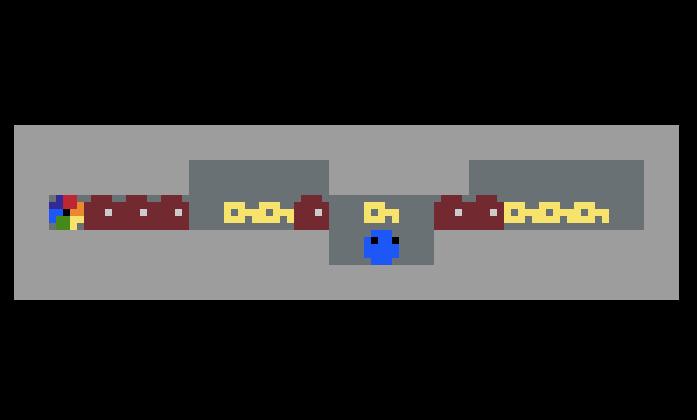
🔑 Opening Puzzles - Learning the Mechanics
Your first Key Stupid levels introduce the core key-pushing mechanics with gentle, tutorial-like puzzles. Early challenges might involve a single key that needs pushing to unlock one door. These opening puzzles establish the fundamental rules: you can push but not pull, corners are dangerous, and planning matters more than quick reflexes.
The PICO-8 aesthetic shines even in these simple levels—clean pixel-art clearly communicates which objects are keys, which are doors, and where you can move. The limited color palette focuses attention on puzzle elements rather than visual noise. You learn through doing, understanding how key positioning relates to level completion without explicit instruction.
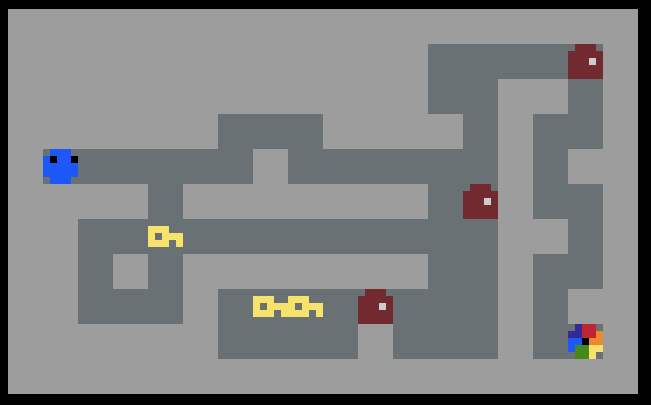
🧩 Mid-Game Complexity - Multi-Key Challenges
As you progress through Key Stupid, puzzles introduce multiple keys requiring coordination. Now you must determine not just where keys need to go, but in what order they must be pushed. Moving Key A first might block Key B's path, while moving Key B first enables Key A to reach its destination. This sequencing challenge transforms simple pushing into genuine strategic thinking.
The compact PICO-8 levels ensure puzzles remain focused. There's no wandering through huge environments—every tile matters, every key has purpose, and every move counts. The game respects your time by keeping individual puzzles self-contained and quickly retryable. Failed attempts teach you what doesn't work, gradually illuminating the correct solution path.
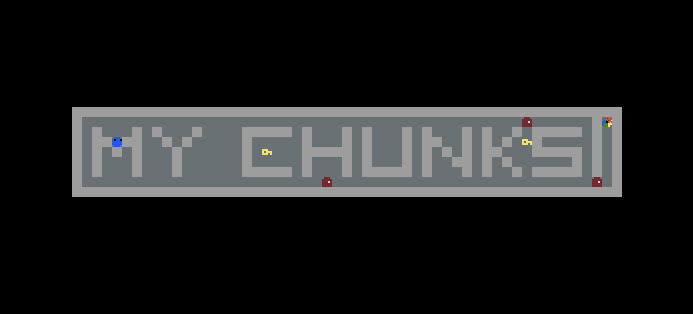
🎯 Advanced Levels - Brain Teasers
Late-game Key Stupid delivers genuinely tricky puzzles that require careful analysis and planning. You might face situations with five or six keys that must move in a precise sequence to avoid creating unsolvable configurations. These challenges demand the spatial reasoning skills you've developed across previous levels—visualizing future game states, recognizing dead-end patterns, and working backwards from goals.
The undo function becomes essential for experimentation. You can test theories, see why they fail, rewind, and try alternative approaches without the frustration of restarting from scratch. This encourages creative problem-solving where learning from mistakes is part of the puzzle-solving process rather than a punishment.
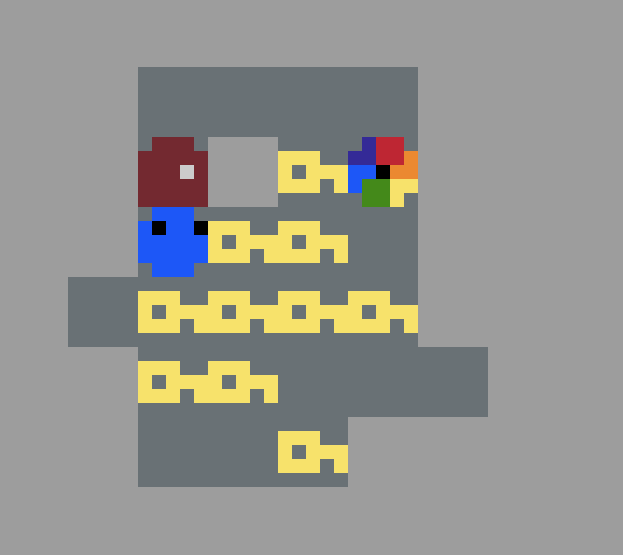
🏆 Mastery - Perfect Solutions
True Key Stupid mastery means not just solving puzzles but understanding why solutions work. Expert players recognize patterns from previous levels, immediately spot dead-end configurations, and visualize optimal move sequences before executing them. What once required careful trial-and-error becomes intuitive spatial reasoning.
The game's compact PICO-8 design means every level is carefully crafted. There's no filler, no randomly generated chaos—just thoughtfully designed puzzles that reward clever thinking. Completing Key Stupid represents genuine puzzle-solving accomplishment, proving you can think spatially and plan strategically under the game's elegant constraints.
💡 Tips for Key Stupid Success
- Plan Before Pushing - Study the entire level before making your first move
- Work Backwards - Start from the goal state and trace required positions backward
- Avoid Corners - Never push keys into corners unless absolutely necessary
- Use Undo Freely - Experiment without fear; mistakes are learning opportunities
- Identify Critical Keys - Determine which keys are essential versus decorative
- Watch for Sequences - Many puzzles require specific move orders
- Restart When Stuck - Don't waste time on clearly unsolvable configurations
- Look for Patterns - Later puzzles often build on earlier mechanical lessons
- Think Multiple Moves - Visualize consequences several steps ahead
- Embrace Constraints - The PICO-8 limitations focus puzzles on core challenges
Key Stupid demonstrates that engaging puzzle design doesn't require elaborate graphics or complex mechanics. Through clever level design within PICO-8's constraints, the game delivers brain-teasing challenges wrapped in charming retro aesthetics. Whether you're carefully planning a five-key sequence or experimenting with different approaches using the undo function, Key Stupid provides satisfying spatial puzzle-solving that respects both your intelligence and your time. Push those keys. Unlock those paths. Solve those puzzles.
Key Stupid — Push Keys, Unlock Solutions

Key Stupid embraces the classic simplicity of PICO-8 design while delivering genuinely clever puzzle mechanics. The premise is straightforward: you push keys around grid-based levels to unlock paths and complete objectives. But beneath this simple concept lies a brain-teasing challenge where every move matters, spatial planning is essential, and the satisfaction of solving a tricky puzzle feels thoroughly earned. The retro pixel-art aesthetic and tight design make Key Stupid the perfect example of how constraints breed creativity.
🎮 What is Key Stupid?
Key Stupid is a puzzle game built for the PICO-8 fantasy console, focusing on key-pushing mechanics within grid-based environments. You navigate levels filled with keys that must be pushed into specific positions to unlock doors, create paths, or trigger mechanisms. The game follows in the tradition of classic block-pushing puzzlers like Sokoban but adds its own twist through key-specific mechanics and increasingly clever level designs.
The PICO-8 platform's limitations—16 colors, 128x128 pixel resolution, limited sound channels—force focused, intentional design. Key Stupid leverages these constraints to create puzzles that feel immediately understandable yet remain challenging to solve. Each level presents a self-contained puzzle where keys must be manipulated just right to achieve the solution, with no unnecessary complexity obscuring the core challenge.
🕹️ Controls
Key Stupid uses classic directional controls appropriate for PICO-8 games:
| Action | Control |
|---|---|
| Move Up | ↑ Up Arrow or W |
| Move Down | ↓ Down Arrow or S |
| Move Left | ← Left Arrow or A |
| Move Right | → Right Arrow or D |
| Undo Move | Z or U |
| Restart Level | R |
| Menu | ESC or P |
The simple grid-based movement keeps focus on puzzle-solving rather than mechanical execution.
🧩 How to Play Key Stupid
Core Mechanics
Key Stupid revolves around strategic key manipulation:
- Survey the Level – Observe key positions, locked doors, and objectives
- Plan Your Moves – Determine which keys need pushing and in what order
- Push Keys – Move into keys to push them one space forward
- Unlock Paths – Position keys to trigger doors or mechanisms
- Avoid Dead Ends – Prevent keys from becoming stuck in unsolvable positions
- Complete Objectives – Solve each level's specific goal
- Progress Forward – Advance through increasingly challenging puzzles
Key-Pushing Rules
Understanding the fundamental mechanics is essential for Key Stupid success:
- Push, Don't Pull – You can only push keys forward, never pull them back
- One Key at a Time – Cannot push multiple keys simultaneously
- Grid-Based Movement – All actions occur on discrete tile positions
- Permanent Positioning – Keys pushed into corners or against walls may become stuck
- Undo Safety Net – Mistakes can be reversed without restarting entire levels
- Restart When Stuck – Unsolvable configurations require full level restart
Puzzle Strategy
Success in Key Stupid requires thinking multiple moves ahead:
Spatial Planning
- Map Critical Paths – Identify which keys must move to unlock level completion
- Work Backwards – Start from the goal and trace required key positions backward
- Avoid Corners – Never push keys into corners unless specifically required for solution
- Plan Movement Order – Some keys must move before others to avoid blocking
- Visualize Final State – Picture where all keys need to end up before starting
Common Patterns
- Key Chains – Multiple keys often need sequential positioning
- Lock and Key – Specific keys correspond to specific doors or mechanisms
- Path Creation – Keys might need placement to form walkable routes
- Trigger Mechanisms – Some keys activate switches or pressure plates
- Blocking and Unblocking – Keys can obstruct or enable access to areas
Problem-Solving Approach
- Identify Critical Elements – Determine which keys are essential versus optional
- Eliminate Possibilities – Rule out moves that lead to dead-end configurations
- Test Theories – Use undo function to experiment with approaches
- Look for Unique Solutions – Many levels have one specific correct sequence
- Pattern Recognition – Later puzzles often build on earlier mechanical lessons
PICO-8 Aesthetic
Key Stupid embraces the fantasy console's distinctive style:
- 16-Color Palette – Limited but carefully chosen color scheme
- Pixel-Perfect Art – Clear, readable sprites at low resolution
- Chiptune Audio – Classic retro sound effects and music
- Instant Loading – Quick level transitions and restarts
- Compact Design – Focused puzzles without unnecessary filler
📸 Key Stupid Puzzle Progression

🔑 Opening Puzzles - Learning the Mechanics
Your first Key Stupid levels introduce the core key-pushing mechanics with gentle, tutorial-like puzzles. Early challenges might involve a single key that needs pushing to unlock one door. These opening puzzles establish the fundamental rules: you can push but not pull, corners are dangerous, and planning matters more than quick reflexes.
The PICO-8 aesthetic shines even in these simple levels—clean pixel-art clearly communicates which objects are keys, which are doors, and where you can move. The limited color palette focuses attention on puzzle elements rather than visual noise. You learn through doing, understanding how key positioning relates to level completion without explicit instruction.

🧩 Mid-Game Complexity - Multi-Key Challenges
As you progress through Key Stupid, puzzles introduce multiple keys requiring coordination. Now you must determine not just where keys need to go, but in what order they must be pushed. Moving Key A first might block Key B's path, while moving Key B first enables Key A to reach its destination. This sequencing challenge transforms simple pushing into genuine strategic thinking.
The compact PICO-8 levels ensure puzzles remain focused. There's no wandering through huge environments—every tile matters, every key has purpose, and every move counts. The game respects your time by keeping individual puzzles self-contained and quickly retryable. Failed attempts teach you what doesn't work, gradually illuminating the correct solution path.

🎯 Advanced Levels - Brain Teasers
Late-game Key Stupid delivers genuinely tricky puzzles that require careful analysis and planning. You might face situations with five or six keys that must move in a precise sequence to avoid creating unsolvable configurations. These challenges demand the spatial reasoning skills you've developed across previous levels—visualizing future game states, recognizing dead-end patterns, and working backwards from goals.
The undo function becomes essential for experimentation. You can test theories, see why they fail, rewind, and try alternative approaches without the frustration of restarting from scratch. This encourages creative problem-solving where learning from mistakes is part of the puzzle-solving process rather than a punishment.

🏆 Mastery - Perfect Solutions
True Key Stupid mastery means not just solving puzzles but understanding why solutions work. Expert players recognize patterns from previous levels, immediately spot dead-end configurations, and visualize optimal move sequences before executing them. What once required careful trial-and-error becomes intuitive spatial reasoning.
The game's compact PICO-8 design means every level is carefully crafted. There's no filler, no randomly generated chaos—just thoughtfully designed puzzles that reward clever thinking. Completing Key Stupid represents genuine puzzle-solving accomplishment, proving you can think spatially and plan strategically under the game's elegant constraints.
💡 Tips for Key Stupid Success
- Plan Before Pushing - Study the entire level before making your first move
- Work Backwards - Start from the goal state and trace required positions backward
- Avoid Corners - Never push keys into corners unless absolutely necessary
- Use Undo Freely - Experiment without fear; mistakes are learning opportunities
- Identify Critical Keys - Determine which keys are essential versus decorative
- Watch for Sequences - Many puzzles require specific move orders
- Restart When Stuck - Don't waste time on clearly unsolvable configurations
- Look for Patterns - Later puzzles often build on earlier mechanical lessons
- Think Multiple Moves - Visualize consequences several steps ahead
- Embrace Constraints - The PICO-8 limitations focus puzzles on core challenges
Key Stupid demonstrates that engaging puzzle design doesn't require elaborate graphics or complex mechanics. Through clever level design within PICO-8's constraints, the game delivers brain-teasing challenges wrapped in charming retro aesthetics. Whether you're carefully planning a five-key sequence or experimenting with different approaches using the undo function, Key Stupid provides satisfying spatial puzzle-solving that respects both your intelligence and your time. Push those keys. Unlock those paths. Solve those puzzles.
Release date
Developer
Platform
